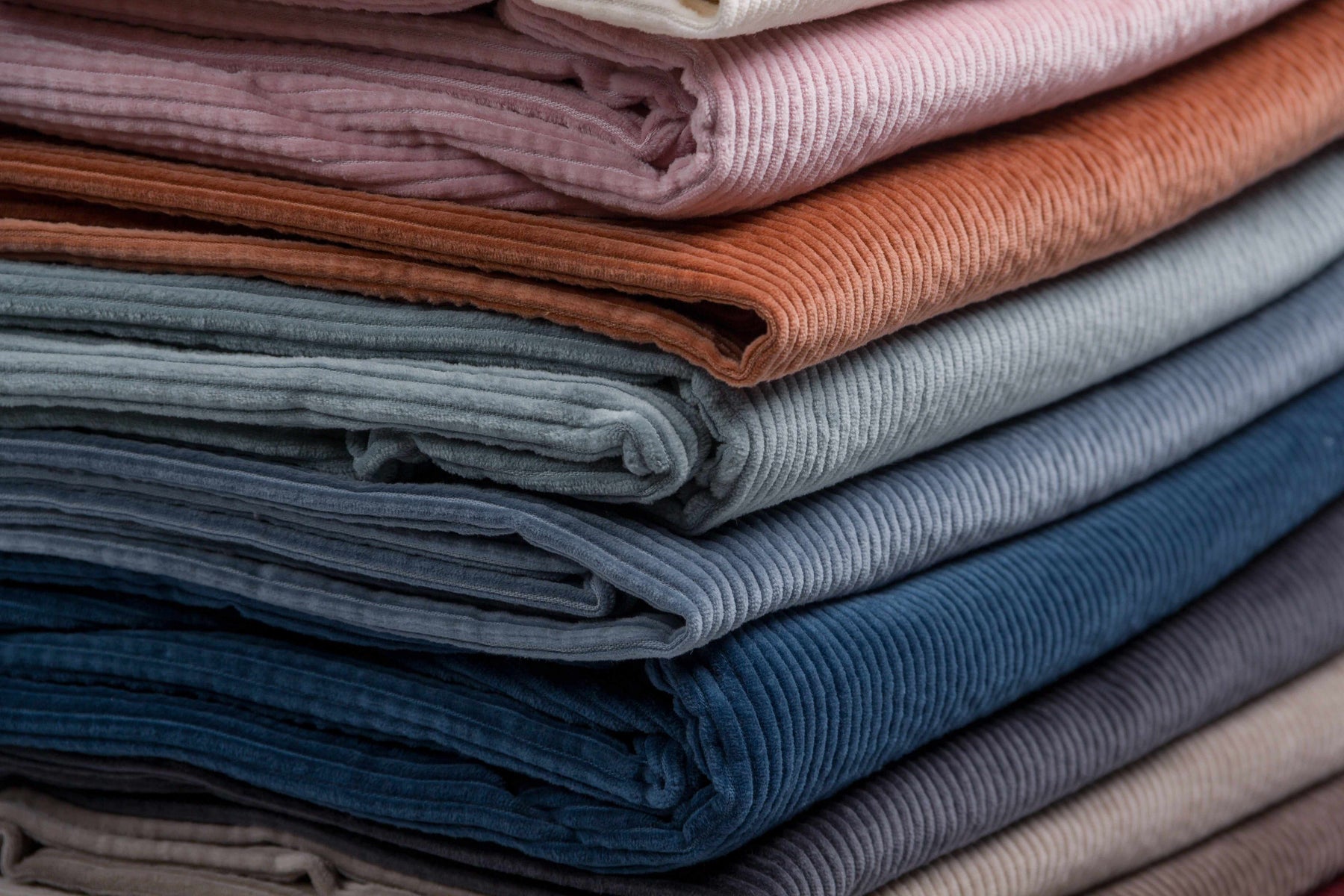
Corduroy - A Versatile Fabric with History

Historians believe that the corduroy fabric came into being in Egypt around 200 A.D., its original name being fustian. Yet, only in the eighteenth century did it become popular in the West, more specifically in England. It was ideal for the British climate, as it was warm and dried quickly.
What type of Fabric is Corduroy?
Corduroy is a very rigid and durable kind of fabric which is most notable for its unique pattern.
Nowadays, Corduroy is usually made using 100% cotton and has a very soft and handy touch. However, it can also be woven using:
- blends of cotton and polyester
- just polyester
- wool
Many experts believe that the term corduroy derives from the French words “cordu du roi” or “cord for kings”.
By the 19th century, the velvet fabric replaced corduroy among the elite class as the most sumptuous fabric. Since then, this fabric has come in and out of style several times.
Corduroy Applications
Nowadays corduroy is a versatile classic in winter collections. It is used for womenswear, menswear and kidswear in bottoms, shirts, overshirts and outerwear.

Check out this jumpsuit made of cotton corduroy, a classic item for mid season young styles.
How is Corduroy Made?
The production process of Corduroy may vary according to the materials used to make it. However, there is a general set of steps followed to make this fabric:
1) Weaving:
Corduroy fabric usually features plain weaves that are made by alternating the weft threads over and under warp threads. But it is not only bound to plain weaves as this fabric can also be made using a twill weave. However, it is less common. Once the weave is complete, a pile thread is used to form the characteristic ridges of the corduroy fabric.
2) Applying Glue:
To ensure that the pile yarn doesn't come off the fabric during the cutting process, glue is applied to the back of the woven cloth. The remaining glue is then removed in later processes.
3) Cutting the pile yarn:
The pile yarn used is then severed in this step by using an industrial cutter. This yarn is then first brushed and then singed to produce the uniform and soft ridges that make the corduroy fabric unique and special.
4) Dyeing the fabric:
Once the corduroy fabric is manufactured perfectly according to the requirements of textile manufacturers, it is dyed. Because of this fabric's unique and irregular pattern, it is usually pigment-dyed to produce an even coloured fabric. The pattern of this dyed fabric becomes more highlighted when it is washed, thus resulting in one of the most appealing and pleasing fabrics out there.
Washing and Care
Corduroy can shrink along the length of the fabric, so it is important to wash it at the correct temperature. Read this and many other well detailed washing, drying and additional caring tips for corduroy on loveyourclothes.org.uk.
You can find our well curated selection of corduroy fabrics here.
